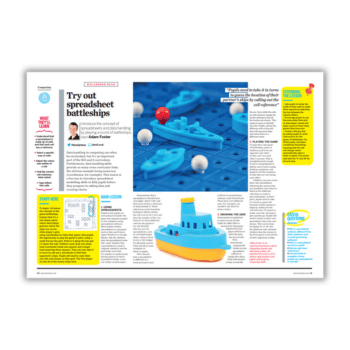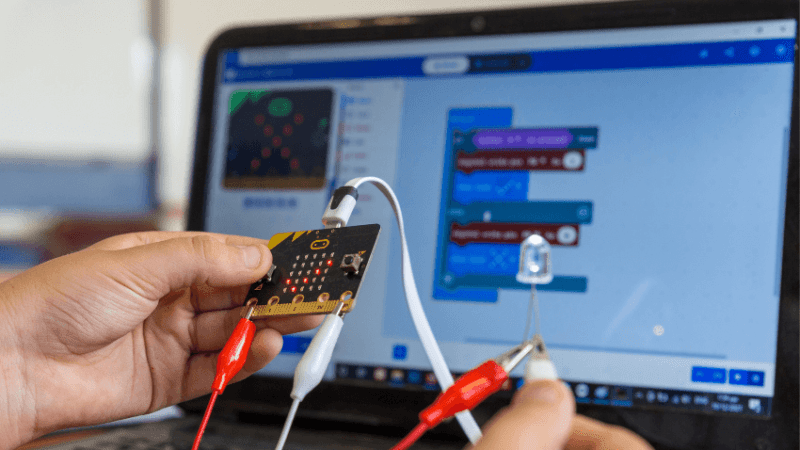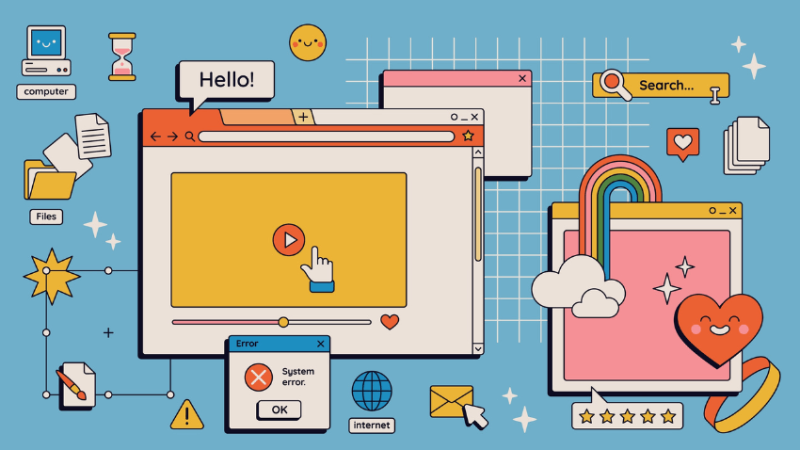KS1 computing – how to help your pupils discover technology

Computing ideas for your youngest pupils, and why not being able to immediately answer questions means you’re doing it right!

I was once standing in front of a class of Year 2 children, teaching computing, and was asked: “Does a speedboat have a computer inside it?”
Did I know the answer? Not at all. I love computing, I was a specialist teacher in my school, but that does not mean I know how a speedboat works.
My answer was ‘probably’ with a promise to get back to them after confirming my suspicions.
However, inside I was excited. A six-year-old child had thought so carefully about what I was teaching them that they’d been able to ask a question to which I didn’t know the answer.
This is what the computing National Curriculum is all about!
The unit of work I was teaching at the time was called ‘IT Around Us’ (part of the Teach Computing Curriculum) and it was all about learners having a chance to understand their world.
It focused on giving them opportunities to think critically about the things that they take for granted and consider how they work.
Children and technology
Recognising the IT around us is an often overlooked topic. We’re keen to learn how to use computers to create things or program robots to move around, yet a solid understanding of what IT is, where it is found and why it’s useful to us is a foundational requirement for everything else.
With technology being disguised in many things, it is playing a much bigger part in our lives, yet we could easily overlook that if we don’t take the time to think critically about what is around us.
When learners enter primary school, there is a divide between how some children have used – or even seen others use – technology and those that haven’t.
Early Years and KS1 are our opportunity to mitigate some of these disadvantages and to show learners that the technology around us allows us to do things that we never thought we could!
However, sometimes as teachers, we hide these things from the children, not wanting to admit we are using technology to help us get through the day.
Think about how you use tech in the classroom. How much of that do the learners see?
Some uses include checking email to pick up the latest planning documents ahead of a lesson, asking Google to translate a French word because a child asked, looking for a video on YouTube of someone reading the story we’re learning about in English, and even taking the register on a computer system.
Allowing children to see that we use technology in this way not only lets them know what it’s capable of, but they will also start to ask questions about how it works.
Where did that planning come from? How did it get from teacher X’s classroom to here using email?
These questions, once encouraged, will keep coming. For instance, when you’re on your way to assembly and a learner sees you unlock a door with a fob: “Is that IT? Does everyone’s fob open the same doors?”
As you pass the fire alarm on the way out to play, you might hear: “Why are there so many buttons? Is that how you turn it off?”
Regardless of the answers to these questions, the fact that pupils are engaging with IT, recognising it around them and considering its purpose, is setting them up for success.
With more and more systems around them using technology, getting them to consider what it’s doing and why is a lifelong skill that will benefit them going forward.
In school and beyond
But it’s not only in school that curiosity abounds. A shop setting is a great opportunity to explore the IT that is around our learners – there’s so much to see.
Shops have automatic doors, tills, barcode scanners, computers that keep track of stock, and maybe even security cameras.
Encouraging the children to discuss the technology when they are outside of the classroom allows them to recognise its broader, everyday use that will still be present in their lives beyond their time in school.
To explore this further, I use a shop roleplay. However, rather than just playing the customers and the shopkeepers, be the IT as well!
I use three roles for the children: customer, barcode scanner and price finder. Each round of the roleplay went a bit like this:
The customer selects several items and scans each barcode on the till.
The scanner beeps, looks up the item from the barcode, and tells the price finder what the item is.
The price finder looks up the price, tells the customer the price, and adds it to the till receipt. After all the items are scanned, the prices are added up.
This gives learners an insight into the role of technology in their world. Why do all these things have barcodes? What happens when the machine goes ‘beep’ when you scan it?
Recognising the range of uses for IT also helps to show learners that technology is not just about playing games and watching videos online, but can also allow us to connect with friends, be creative and share our successes more widely.
Not all uses of technology are weighted equally and it’s important to not limit ourselves to one.
Employing technology to create and share something can be empowering, and we need to consider when and how we decide to use it, and why.
Imagine a world where education empowered all children to recognise the potential of technology, to have the skills to utilise that technology and the understanding to challenge its appropriate use in school and beyond – now that’s as impressive as a speedboat having a computer inside of it!
Sway Grantham works for the Raspberry Pi Foundation developing free computing resources and online training for primary teachers. Follow Sway on Twitter @SwayGrantham












